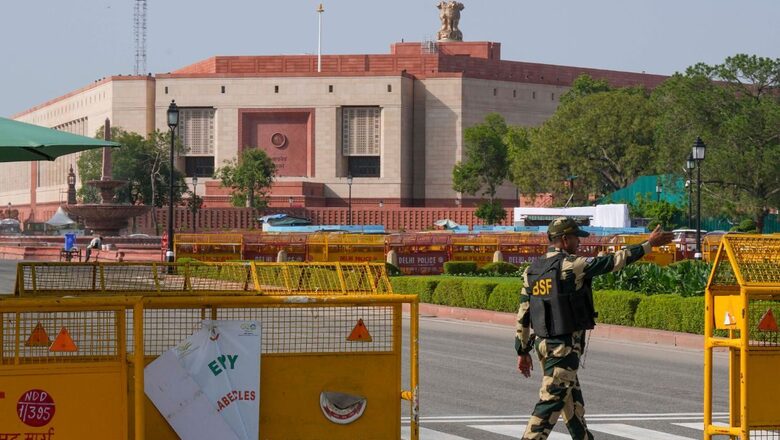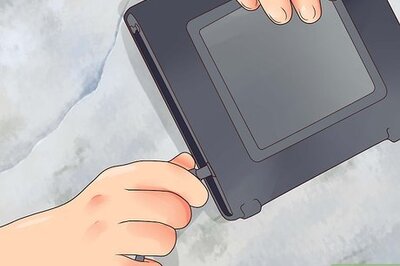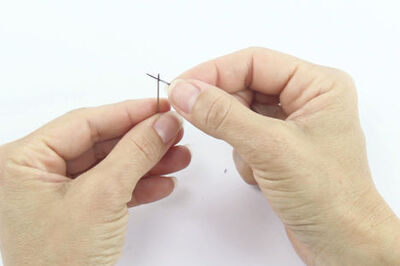
views
In the heart of the nation’s capital, the Parliament House stood tall and imposing, not just as a symbol of democracy, but also a fortress safeguarded by an intricate web of security measures.
For years, it had been perceived as one of the most secure places in the country, a haven where the elected representatives could carry out their duties without fear.
However, today two visitors managed to enter the parliament with cannisters. The two accused — Manoranjan D and Sagar Sharma— seated in the visitors’ gallery took out canisters from their shoes and jumped towards the desk where Members of Parliament were seated during the session.
The incident has shaken the security foundations of this security system. The breach happened on the same day when Parliament was attacked by terrorists.
VIDEO | Police detain a man and a woman who were protesting outside #Parliament premises using colour smoke canisters. pic.twitter.com/V6nB7ljhXh— Press Trust of India (@PTI_News) December 13, 2023
Though, there is no link with these two incidents as the security officials have ruled out any terror angle. Agencies have said that the two accused were common persons willing to register their protest.
Guardians of Security
At the epicentre of the Parliament’s security apparatus stood the Joint Secretary (Security), a figure entrusted with the daunting responsibility of overseeing operations involving Parliament Security Services, Delhi Police, Parliament Duty Group, and various allied security agencies.
The security system has been designed as a multi-layered defense, incorporating cutting-edge technologies and traditional security measures.
Tyre killers and road blockers are strategically placed and a Security Power Fence adorns the perimeter, creating a threat to intruders. A joint command and control centre has been established for better coordination.
Area wise responsibility
Security Officer/Assistant Director (Security) will ensure proper checking of passes of persons moving inside Parliament House building and raise cases of misuse, if any to the Deputy Director (Security).
The area in-charge ensures that all the specific norms and regulation of their area of responsibility are properly implemented without any dilution and the staff is briefed properly.
VIDEO | Visuals from inside Lok Sabha when the reported security breach took place.More details are awaited. #Parliament pic.twitter.com/O9n9nu6ZKj
— Press Trust of India (@PTI_News) December 13, 2023
All Supervisory Officers take frequent rounds of their respective area of responsibility to intercept any person moving around in a suspicious manner.
Passes and Protocols
Within the Parliamentary complex, the issuance of Gallery passes was a process meticulously governed by controlled protocols. Only Members of Parliament could apply and the methods included paper applications or the Digital Sansad Website.
Each pass was assigned a unique ID and stringent measures were in place during sessions to prevent labourers from obtaining passes.
Gadgets and Fortifications
The security arsenal boasted Door-frame Metal Detectors, modern gadgets, and Radio Frequency Tags controlling vehicle access.
However, the fortress was not impervious and the recent incident has prompted a closer examination of the security infrastructure.
A visitor in the Parliament gets frisked and his or her bags are checked at least thrice. The process starts with the entry in the parliament area. After getting through from metal detectors, one enters into second level of security check, before entering into visitor gallery where another security check is done.
Arms Prohibition
Even as some Members of Parliament enjoy security cover, arms and ammunition are strictly prohibited within the Parliament House Complex. Only designated security personnel were granted this privilege, with a meticulous process at each gate.
Identification and Coordination
The access inside the Parliament is relied on identification, verification, and coordination among various security agencies, responding to an ever-evolving threat landscape.
The Parliament Security Service play a pivotal role in liaising with Delhi Police, Parliament Duty Group, Intelligence Bureau, Special Protection Group, and National Security Guard.
What Went Wrong?
The breach on Wednesday left security forces puzzled. Visitors managed to navigate all security checkpoints, including metal detectors and manual frisking, infiltrating the seating area of Members of Parliament with canisters in hand. The suspicion lingered on a lax approach during visitor frisking, raising alarming questions about the integrity of Parliament’s security.
As investigations unfolded, the story of a breach in the parliamentary security continued to unravel, casting a shadow on the supposedly impregnable fortress that guarded the heart of the nation.
The layers of security, once believed to be impenetrable, now faced scrutiny, prompting a re-evaluation of the measures in place to protect the sanctity of the Parliament House.



















Comments
0 comment